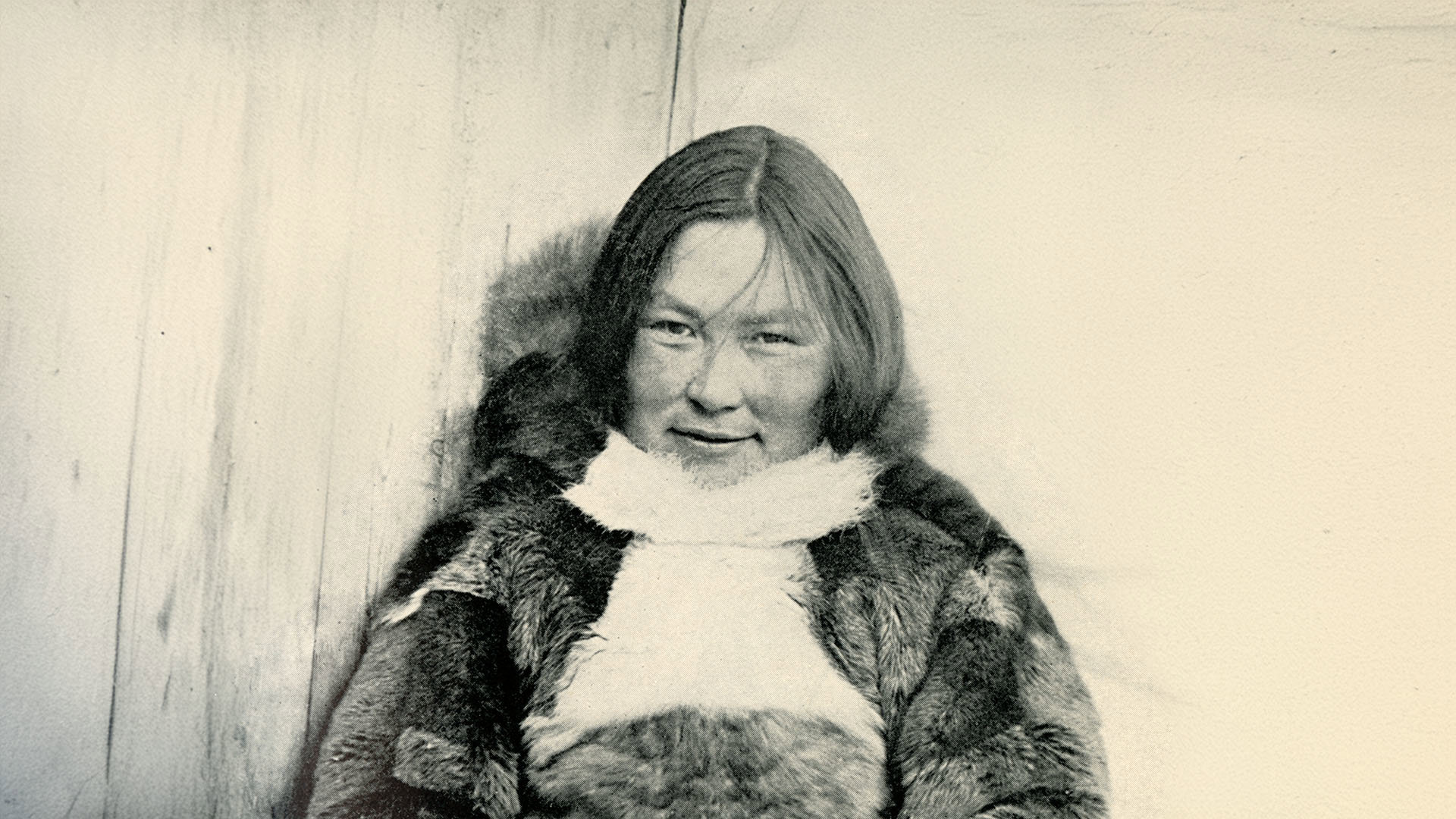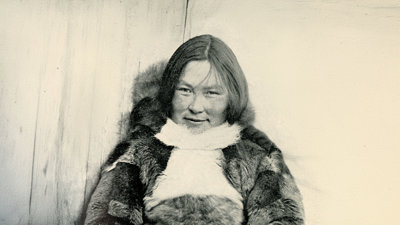Arnarulunnguaq (1896-1933) is one of the most well-travelled Arctic explorers of all time. Yet few people outside of Greenland know who she was and what she accomplished in her short life.
Early life
Arnarulunnguaq was born in Qaanaaq in northwestern Greenland in 1896. Her father was a hunter and his death, when Arnarulunnguaq was only seven, left the family in such great difficulty that she was almost sacrificed to reduce the number of mouths to feed. Fortunately, she survived and later married another hunter called Iggiannguaq.
Meeting Rasmussen and the fifth Thule expedition
Knud Rasmussen, born in Greenland in 1879 to a Danish father and a Greenlandic mother, was fascinated by his mother’s culture. After education in Denmark and a brief career as an actor and opera singer, he began an extraordinary series of expeditions in Greenland and in the wider Arctic, motivated by a desire to learn more about Inuit culture and how the Inuit came to be dispersed across the Arctic.
Between 1912 and 1933 Rasmussen led seven expeditions from his base at the Thule Trading Station at Qaanaaq (Cape York). The fifth Thule expedition was the most ambitious – Rasmussen hoped to discover the origins of the Inuit by travelling across the Arctic to Alaska and Siberia.
In 1921 Arnarulunnguaq’s brother, Ajako, was recruited for Knud Rasmussen’s fifth Thule expedition but he died shortly after joining and Arnarulunnguaq and her husband took his place. However, before the expedition could depart, Iggiannguaq also died, leaving Arnarulunnguaq to either return home alone or continue with the expedition; she elected to stay on.
Arnarulunnguaq's role in the expedition
Initially, Arnarulunnguaq’s role on the expedition was domestic, and included cooking and mending the animal skin clothing worn by the explorer. However, as the expedition progressed her skill as a dog driver came to the fore and she took her turn driving the heavily laden sledges, each drawn by 12 dogs.
Rasmussen also employed her to help with the gathering and preservation of botanical and zoological specimens, assist with archaeological excavations and document the tattoos of the Inuit women.

During the course of the expedition, Rasmussen, Arnarulunnguaq and her cousin, Qaavigarsuaq (also known as Miteq), travelled 18,000 km across the Arctic from Greenland to the Bering Strait. No Arctic expedition had previously covered such an enormous distance.
After the expedition
Although at the conclusion of the expedition Rasmussen was the main focus of attention, Arnaralunnguaq was not forgotten. She was awarded a Silver Medal of Merit by King Christian X of Denmark and the President of the United States, Calvin Coolidge, expressed a wish to meet her.
Unfortunately, during a stop in Copenhagen at the end of the expedition, she was diagnosed with tuberculosis and, although she received treatment, she died just nine years later, aged 39.
The poet and diplomat, Aqqaluk Lynge, wrote:
Arnarulunnguaq ,
Your humour and bright mind are remembered.
No one has made a plaque,
A statue or a book ,
but your spirit and your strength,
are everywhere like a bond,
for our people.
Without you the world was only half,
and the journey incomplete…
Further reading
Rasmussen, Knud. Across Arctic America: Narrative of the Fifth Thule Expedition. New York, London: G. P. Putnam's Sons, 1927.
